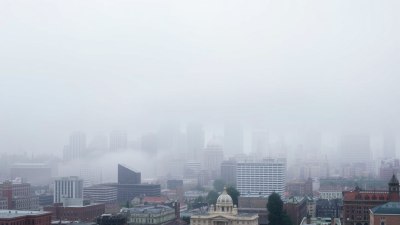Why the only available taxi is always the most expensive one
Explore the reasons behind the high costs of taxi services when options are limited.

When you find yourself in need of a taxi, it can often feel like the only vehicle available for hire is the most expensive one. This frustrating experience can lead to questioning various aspects of the taxi industry, including pricing models, demand and supply dynamics, and even regional economic factors. In this article, we delve into the reasons why the only available taxi option frequently comes with a steep fare.
Dynamics of Supply and Demand
One primary reason that contributes to the high cost of the only available taxi is the principles of supply and demand. When you are in an area where taxis are sparse, such as during high-demand times or in less populated regions, the number of available vehicles significantly decreases. This scarcity naturally drives prices up, as customers are willing to pay more for the convenience of immediate transportation.
For example, during peak hours like rush hour or during special events, there is an increase in demand for taxis as numerous people require rides simultaneously. In response to this higher demand, taxi services often raise their fares to reflect the number of customers requiring their vehicles. This phenomenon can be particularly pronounced in urban areas where taxi services compete aggressively.
Surge Pricing Models
Many taxi services, especially those that utilize mobile apps, implement surge pricing models. When demand exceeds supply significantly, these algorithms can cause prices to inflate sharply. If you’re using an app-based taxi service and find that the only vehicle available is exceptionally high-priced, it's likely because the system has detected a surge in demand based on the current conditions, such as time of day, weather, or local events.
Surge pricing is designed to encourage drivers to come to areas of high demand and to balance out the supply of taxis to meet customer needs. However, this often places the financial burden on passengers, who must pay these inflated rates when their options are limited.
Operational Costs and Fixed Expenses
Taxis, like any other business, have a range of operational costs that must be accounted for in their pricing structures. These can include vehicle maintenance, fuel, insurance, and licensing fees. When the demand for taxis dwindles and only a few vehicles are operating, drivers may need to increase their rates to cover these fixed expenses and ensure their business remains sustainable.
The economic model of taxi services often means that prices reflect more than just the journey you are currently undertaking; they also encapsulate the broader financial realities of operating a taxi company. The more limited the supply of available taxis, the more justified these higher prices become in terms of overall revenue needs.
Geographic and Regional Differences
Taxi pricing is also influenced heavily by geographical and regional differences. In popular tourist destinations, for example, taxi fares can be significantly higher due to the prevalence of tourists unfamiliar with local transportation systems, leading to a reluctance to explore alternatives. In contrast, a local resident might know better routes or more affordable options, thus avoiding the high prices.
In certain areas, local regulations dictate fare structures. Some municipalities impose strict rules on how much taxi services can charge, while others allow for a more laissez-faire economic approach. In urban centers where many taxi companies operate, competition is key, often leading to better pricing for the consumer. However, in more remote areas or towns with fewer taxi services, the lack of competition can leave passengers with little choice but to pay whatever fare is presented.
Quality of Service Considerations
Another factor influencing the cost of taxi services is the quality of service that comes with a higher fare. In many cases, taxis that charge more may provide a luxury experience, which includes well-maintained vehicles, professional drivers, and additional amenities. This aspect can create a perception of value when only higher-priced options are available, as customers are often willing to pay for a superior transportation experience.
Furthermore, some taxi services offer extra safety measures, which may be perceived as worth the additional cost, especially for late-night travelers or those in unfamiliar environments. When customers feel they are receiving a higher level of service or safety, the premium price may become more palatable.
Changes in Payment Technologies
The emergence of cashless payment technologies has also influenced taxi pricing. Ride-hailing apps and platforms like Uber or Lyft have revolutionized the industry, creating a new standard for convenience and service. However, these services often carry a higher price point, leading some to believe that traditional taxi services must raise their prices to remain competitive.
As more taxis begin integrating similar payment models and technology, the landscape of how taxis operate financially may shift, further intertwining service quality and taxi rates. Nevertheless, in moments when only high-cost taxis are available, the convenience of cashless transactions may not mitigate the frustration of high fares.
Consumer Behavior and Expectations
Consumer behavior plays a pivotal role in how taxi pricing is determined. Often, passengers may decide to take a taxi for convenience, especially in situations where time is of the essence. This willingness to pay higher fares for immediate transportation has led taxi services to adjust their pricing strategies to reflect the urgent needs of their clientele.
Additionally, the expectation of modern customers is shifting. People are more accustomed to paying for convenience, often opting for faster options even when slightly more expensive. This evolution in consumer expectations influences how taxi pricing structures evolve, perpetuating a scenario where higher fares are commonplace when choices are limited.
Rideshare Competition and Market Options
The rise of rideshare companies has undeniably altered the taxi industry. With companies like Uber and Lyft dominating the transportation sector, traditional taxis have had to adapt to stay relevant. The price competition can sometimes lead to higher fares, especially when taxi companies perceive rideshare services as a threat and adjust their pricing accordingly.
When only the most expensive taxis are available, it is often because the cheaper alternatives are fully booked, or they may not operate in the area or at the specified time. Understanding this competitive landscape is crucial for comprehending why fare structures can fluctuate dramatically based on market conditions.
In summary, the phenomenon of only having the most expensive taxi available boils down to intricate interactions within supply and demand dynamics, pricing strategies like surge pricing, operational costs, and regional differences. This issue is further complicated by evolving consumer behaviors, challenges from rideshare competition, and expected service quality. As the taxi industry continues to adapt in the rapidly changing transportation landscape, passengers must remain aware of these contributing factors when they encounter high fares.











